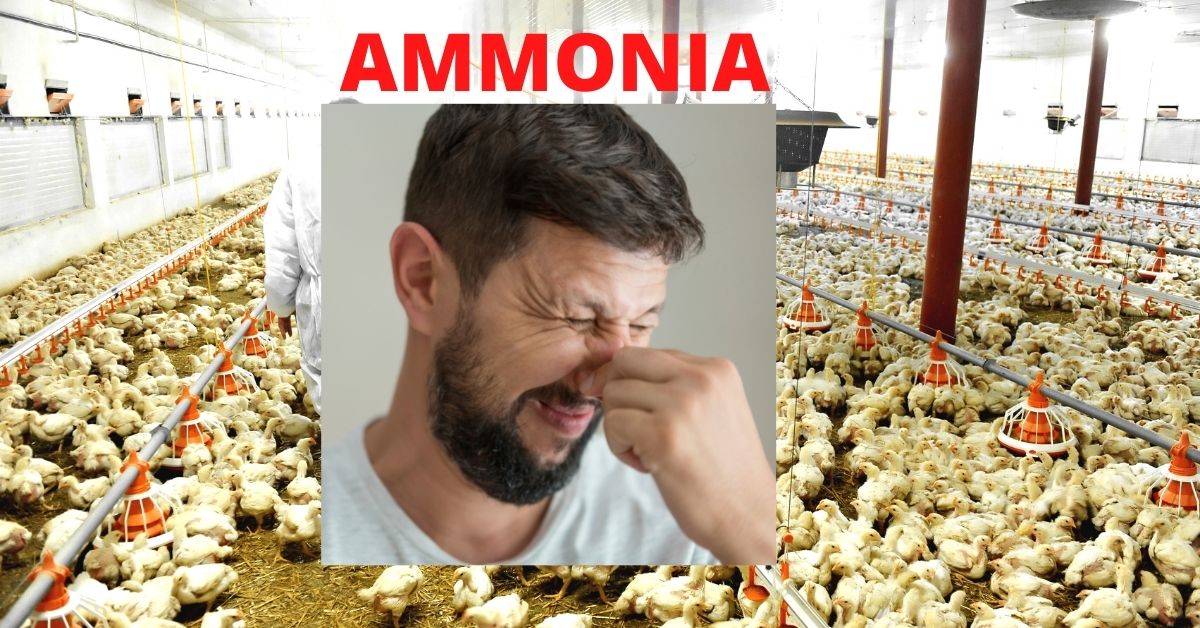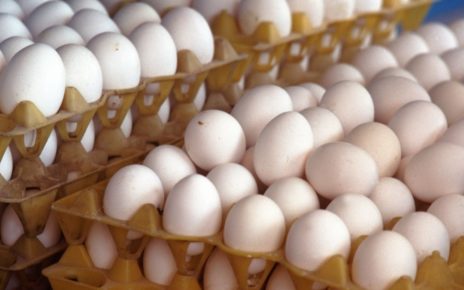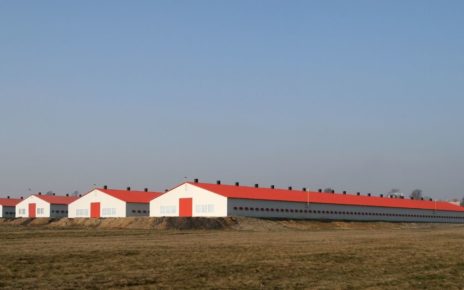Ammonia in Poultry and Solution of General effect of ammonia gas.Ammonia gas has a characteristic pungent odor. Concentrations above 50 ppm is considered harmful.
Ammonia is a product of bacteriological processes in the manure. Ammonia is lighter than air and thus it rises in the air. The ammonia content of the poultry house air depends on ventilation, temperature, relative humidity and stocking density. High ammonia concentrations irritate the mucous membranes.
High level can be irritating to eyes and mucous membranes of the respiratory track .This can cause Damage to the mucous membranes of the respiratory system.
This can increase the bird susceptibility to respiratory infection resulting less weight gain high feed intake.
Ammonia in Poultry can disturb immune system of the birds resulting more viral and bacterial infection.
The effect of ammonia gas on the mucosal surface of the trachea ranges from paralysis of cilia.
Complete Poultry Training – Link
(Cilia are found in the lungs and respiratory tract. These cilia are microscopic, hair-like structures have a rhythmic waving or beating motion. They work, for instance, to keep the airways clear of mucus and dirt, allowing birds to breathe easily and without irritation.
When cilia become paralyzed or are lost due to high ammonia levels in the poultry house, mucus on the mucosal surface of the trachea cannot be cleared and bacteria on dust particles may reach the lungs and air sacs and cause infection.
Ammonia gas also has effect on Eyes of Poultry Birds. It can cause irritation to birds resulting less performance of bird. We can’t expect better performance from the birds are not in relaxed position.
Ammonia gas causes secondary infection such as mycoplasmosis and more.
Solution to Decrease or control Ammonia in Poultry Shed to increase profit in poultry Business.
Alum is normally applied at a rate of 5 to 10 percent by weight in the litter, In Litter we commonly use wood powder or rice cover.
Ensure the chickens do not consume the granules of alum that physically mixes well as powder into the litter. So it’s better to use solid powder Alum instead of liquid Alum.
Alum controls ammonia emissions by acidifying the litter resulting less growth of pathogen.
Like all acids, it should be treated with the proper respect. Applicators should always should wear dust mask to avoid breathing alum dust. Never try to contact alum with poultry equipment.
Gloves should also be worn when handling alum to prevent skin irritation. The acid in alum will be neutralized in the litter after two to four weeks depending on application rate. Thus there are no precautions needed for handling the litter at cleanout.
Application of alum in poultry shed or in litter does not mean that ventilation can be completely stopped. Since birds generate a great deal of moisture throughout the life of the flock also cause Ammonia in Poultry. it is essential to provide proper ventilation from day one.
Sufficient amount of litter must be used either rice cover or wood powder minimum 2-4 inches level.
Remember using alum not mean to compromise with quality of Litter. Always use dry and fungus free litter in poultry house.
While Racking add Wood ash around 1 kg in 100 square feet to prevent release of high ammonia and reduce moisture in Litter.
Immediately through wet litter from shed, never mix it during racking.


